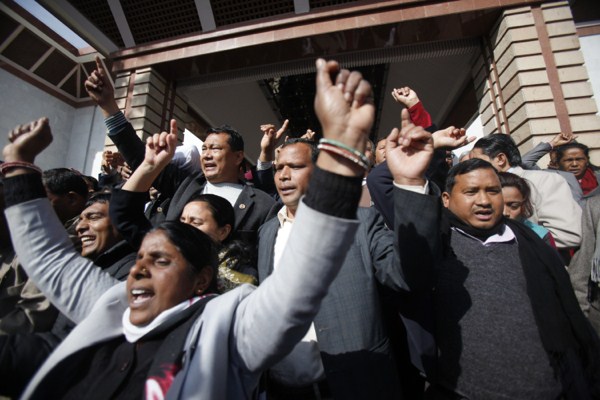KATHMANDU, Nepal—As the brawl that broke out in Nepal’s Constituent Assembly last week highlighted, the country’s transition from war to peace, and from monarchy to republic, is at a critical juncture. More than eight years after the end of Nepal’s decade-long civil war, a second Constituent Assembly has failed to promulgate a new constitution within its self-imposed Jan. 22 deadline. As the ruling coalition and Maoist-led opposition struggle to find a way out of the deadlock, instability has sharpened and is likely to continue.
In the past month, strikes and protests have crippled main roads and other transportation arteries throughout the country, bringing commerce to a standstill. Gas shortages and periodic electricity cuts unconnected to the political standoff have compounded frustrations in the capital, Kathmandu, where protesters across the political spectrum have demonstrated in recent weeks.
The mounting protests and security challenges are testing the strength of Nepal’s democratic institutions and the leadership of its major political forces. The long-feared prospect of a new constitution being passed by majority vote in the assembly, instead of by consensus among all of Nepal’s political parties, is looking increasingly likely. The ramifications for the constitution’s credibility are significant.

